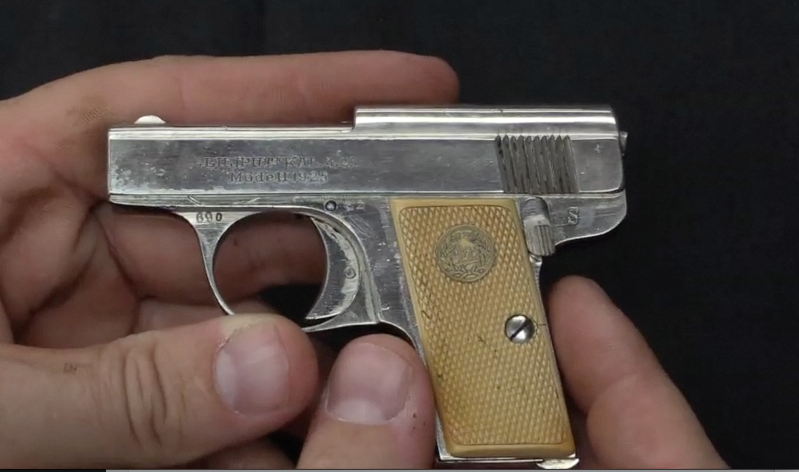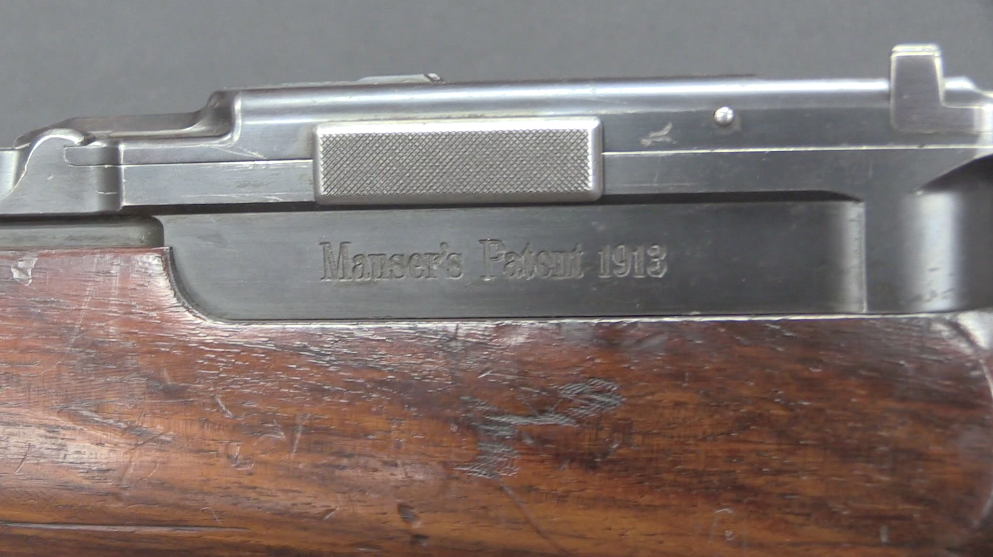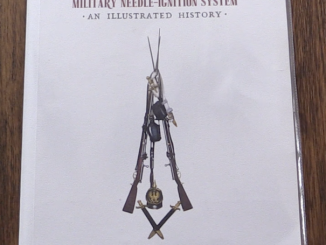Mauser did not limit their Model 1912 and 1912/14 pistols to just being chambered in 9mm – they also developed a number of prototypes in .45ACP. Today we have a series of three such prototypes showing the sequence of changes in the operating Mechanism used by Mauser. The first uses a friction lever with a buffer, the second is a revised version of friction delay, and the third uses the flapper-delaying system that became standard on the 9mm examples.
My previous video on the 9mm Mauser 1912/14:
For more information, I suggest “Mauser Pistolen” by Weaver, Schmid, and Speed:




Are you sure that that’s a delayed blowback?
It looks a lot more like an inertia locked system, with the inertial weight between the flaps
They’re beautifully made and finished,
This is Metal-culous!
One observer on YT have made this comment: “These guns are so German, they are almost Swiss.” I think he hit it right.
Ian – this is why we come to your page, day after day. Here’s a rather rare pistols w/ incredibly low production – but this is a prototype – in a never produced caliber – oh, and actually THREE prototypes, all in this never produced caliber, all w/ different experimental actions. Let’s take them apart, so you can see the insides that no more than 10 people have seen since the beginning of the 1st World War…
What a fertile mind… workmanships seem also excellent…
All seem to work as inertia operated rather than delayed blowback and most understandable one seems with the flap locked… Others seem complicated… Buffer type seems having an inertia block in front of the folded spring… The one with release latch inside the trigger guard seems having an unseen block supporting the angled lever at underside during recoil… IMHO…
Hi Strongarm
there is one minor issue with springs, especially those located in small enclosed compartment, with long term reliability. To support the locking element reliably they have to work 100% which in this case is not guaranteed. By the time there is dirt/ crud accumulation which can hamper them badly. No wise designer relies on springs for purpose of locking.
The flat spring may be little more suitable because it does not need much space, but it can fail too (as a result of fatigue).
I’m pretty sure I’d trust a Colt 1911 not to rip itself apart over spring fatigue, as the action is held shut by the barrel lugs and slide recesses. I could be wrong.
In that case (as almost all others) the return spring is ‘free to air’ meaning the dirt accumulation is nearly impossible. Springs do take a “set” which is their normal behavior, depending where is their maximum operating load with respect to material yield point. Also note that many recoil spring designs are of a double setup to mitigate this possibility.
However there’s the possibility of the gun being in battery with the delaying mechanism open, and that should’t be possible. Notice how flapper locked systems, as the DP-28, don’t rely on springs to lock the flaps, nor can fire with the breech open.
Could someone please make a repro of these?
An original one would be cheaper.
Hi Denny… Agreed with you… Springs are bad locking actuators… Solid cams should be used for this purpose… But this kind of inertial devices should use springs for the inertial masses to return to their starting locations… Accomplishing the same task through cammed surfaces needs real genious IMHO…
It can be done
For example a curved travel for the inertial weight
So that the slide returning to battery, flips it back and then over rides it, leaving it free to move forward
Would be nice to see it up close wouldn’t it? Or at least to see a diagram. Maybe I ask too much 🙂
I was looking at the striker ignition and thinking “very Browning, from the baby Browning pistols, to the bottom eject .22 Browning semi auto rifle.
But of course, both Borchardt and Luger beat Browning to it. How very Germanic.
I wonder how much of these designs represented work around to avoid patent infringements?
It’s arguable that the flapper lock and inertia piece would have resulted in a pistol the wore out slower than a tilting barrel Browning
But, other features such as the cut away top of the slide, point towards a sacrifice of durability
Definitely, a delayed blowback.
The deceleration is achieved by friction between the slide and the valves at the start of the shot.
Like any friction system, this one is very sensitive to…
friction.
That is, the presence or absence of grease or dust.
They are also sensitive to the quality of the ammo in terms of their power.
In addition, the wear of the supporting surfaces is inevitable, which means that, with wear, the effect of slowing down the unlocking of the slide will weaken. Until the detached part of the slide flies into the operator’s head.
A very interesting system, but nothing more.
In real life (especially for service weapons) it is useless.
Stillborn.
Agree with you. The presence of grease and dirt as a result in tight space is a major factor. Mechanically the idea is great, but physical conduct decided their viability. It is usual learning loop.
There is also the problem, already stressed by Strongarm above, of relying on springs to close the flappers. They can break or get clogged, while lever/roller/toggle delayed work only thanks to geometry.
Actually to transfer the tilting block of the Mauser C96 where those guns have the flappers would have simplified the design.
Any locking or delaying device with lugs at the both sides, would be accepted as inferior to the ones having the locking lug at the central location… Those Mauser pistols, though reflecting extraordinary findings, having both, two side lugs and dubious working parameters, might not reach to a succesfull eventual production … Inventors should not waste time working on the locking devices with lugs at the both sides IMHO…
Absolutely
Even with something like a front locking bolt action, where the lugs and the locking seats can be cut by a single point tool on a lathe turning operation,
It’s surprising how often only one lug makes contact.
Tandem locking seats, such as on Browning pistols, probably wear into contact, before they wear out.
At least the Browning style locking system is close to the axis of the bore, so it doesn’t generate bending moments
The third prototype is absolutely not a delayed blowback
Ian is misinterpreting the slight angles on the front of the locking flaps and the front of the slide.
Let’s consider the geometry
In the locked position, the flaps angle inwards, their pivots are outside
Just think for a moment, what path the tips of the flaps would try to take in response to pressure from firing.
If the surface of the front of the side was flat, it would try to force the flaps together
With a flat surface, the flaps could only move apart by pushing the slide forwards – but that can not happen.
Those slight bevels are there to allow the flaps to rotate to open
It is the inertia of the block between the flaps that forces them apart
The bevels are necessary to allow that movement to take place.
The principle of operation of all three models is the same.
Delay of unlocking until reaching the force required to “break” from the supporting surfaces having a mutual angle of self-braking.
The main problem, self-unlocking occurs when a certain minimum effort is reached. This means that with a more powerful ammunition, unlocking will still occur with the same minimum effort. And then the scheme turns into a straight blowback.